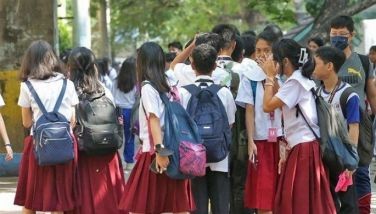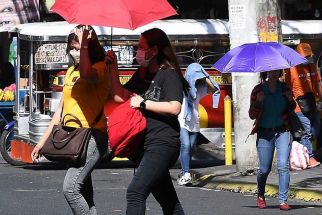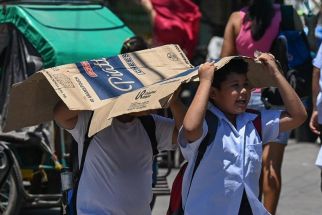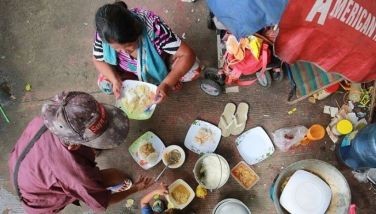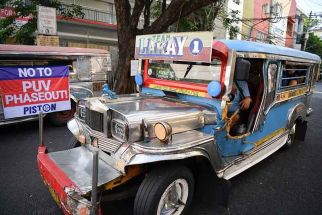Internally displaced people of Mindanao rebuild lives

(The author, who covers public finance for The STAR, won in round one of the THINK3 global blogging competition organized by the Netherlands-based European Journalism Center. This article is one of her blog entries published on May 15, 2010 at http://development.thinkaboutit.eu/think3.)
DATU PIANG, Maguindanao, Philippines – Jun comes out from the darkness with a charcoaled kettle in one hand. He squints, eyes blinded by the glare of the yellow sun. His four-year-old daughter peeps outside to look for her daddy. Strands of curly brown hair cover her big round eyes. Jun takes a few steps to an open fire to boil some drinking water.
People start coming out of this huge enclave beneath Datu Gumbay Piang Central Elementary School, a dilapidated two-story wooden building.
This space is temporary shelter to dozens of internally displaced persons (IDPs) here in the province of Maguindanao, in the Southern Philippine island of Mindanao. Caught up in the middle of a decades-long conflict between government troops and rebels, the IDPs had to leave their homes in far-flung villages.
When they first moved to the school compound, they slept inside makeshift tents set up on the vacant front yard – but authorities transferred them to the huge area underneath the school in preparation for last May’s national elections. In the Philippines, the voting and counting of ballots are done in public and private schools around the country.
This underworld is a shadowed space. Small amounts of light seep through the slabs of wooden panels that serve as walls. Some makeshift doors are too small. To get inside, you have to stoop through manholes, reminiscent of ‘Alice in Wonderland.’
There are no tables and beds; everything is improvised from broken classroom chairs and tables. They sleep on tattered mats laid on the dry earth, sharing the space with scrap and junk materials the school no longer needs.
The stench of mud, trash and rotten food pervades the air. There is no toilet, just patches of holes dug on the ground; no clean water, no electricity.
Jun, his wife Angel and their three children are among the IDPs who fled from the interior villages.
According to the United Nations World Food Programme, in a March 14, 2010 article published by Mindanews (a Mindanao-based online news cooperative and information center), there are 320,000 people who remain displaced in Maguindanao and neighboring areas as of September last year.
Two years have passed but the thunderous sounds of guns and flying howitzers still echo in their ears. The pain of leaving their homes still haunts them. They remember it like a loved one’s death.
“It happened on Aug. 17, 2008,” says Angel.
With each passing day, the family struggles to rebuild their lives.
Angel now works with Medecins Sans Frontieres, an international medical and humanitarian aid organization working predominantly in conflict areas, including the Philippines.
For a day of work distributing medicine during mission work, she earns P300.
“That’s a big help for my family,” she says.
On most days, Jun looks after the children and waits for Angel to come home. A regular job is hard to come by for him because he did not finish elementary school.
But on lucky days, he says, non-government organizations offer them “food for work.” He points to a distant concrete house he helped build some months ago in return for some cash for his family’s survival.
There are other IDPs here; family spaces are divided by whatever clothing and wooden panels they can find.
In another area live Aida and her children. Today, she is busy weaving fans out of the native silay or palm leaves. The whole space she occupies is covered by heaps of colored leaves, some untouched, some unfinished.
She is preparing to complete a dozen of these fans to sell in the market for P110. It’s a long process. The leaves are laid out in the sun for days. These are then dabbed with different colors to create designs from out of her dreams.
The dyed fans are then left under the heat for another long process of drying.
From the sun-dried leaves, there emerges – like magic – a kaleidoscope of yellow, purple and green-colored fans.
This helps Aida and her kids survive most days.
When there is nothing to sell she puts her children to sleep, their stomachs grumbling and empty.
But for the IDPs here, giving up isn’t an option.
Slowly, one by one, piece by piece, difficult as it may be, they struggle to rebuild lives harshly disrupted by war – as pain-stakingly and carefully as they weave those little intricately-colored fans, for a few pesos a day.
- Latest
- Trending















